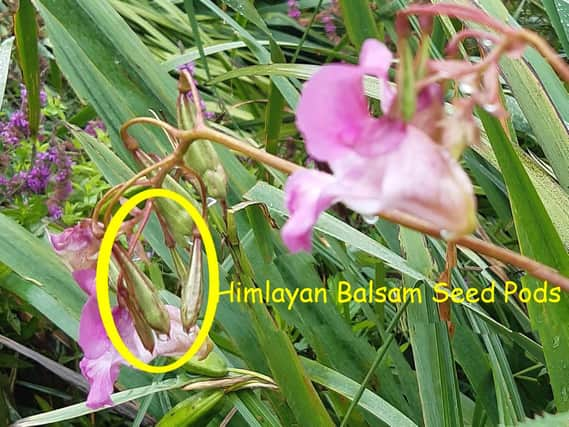Volunteers tackle an unwelcome visitor from the other side of the world that is making its home in Kenilworth


An unwelcome visitor from the other side of the world, which has been making its home in Abbey Fields, has been confronted once again in Kenilworth.
Seven volunteers from the Friends of Abbey Fields collected around 15 bags of the Himalayan Balsam flower, an invasive species from the Himalayas.
Advertisement
Hide AdAdvertisement
Hide AdLarge areas have now been cleared of the flower, but it has been encroaching on new areas of Abbey Fields.
David Emsley from the Friends of Abbey Fields said: "Unfortunately, Abbey Fields is infested with Himalayan Balsam.
"It appears that the best way to remove it, short of excavation or the use of agricultural grade chemicals, is to attack it before it sets seeds and pull it up.
"There will be plenty to work at next year!"
More on the Himalayan Balsam
According to the Royal Horticultural Society, it is the largest annual plant and can grow up to 2.5m high from seed in a single season. Because it can shoot its seed up to four metres it is able to spread rapidly. Also, as it likes to live on stream and river banks, the water can carry the seeds downstream, which further allows its rapid colonisation of other areas and its ability to shoot seeds helps it to go upstream.
Advertisement
Hide AdAdvertisement
Hide AdOnce the plant has flowered it creates seedpods which ripen quickly and when ready, or the plant is disturbed, the seedpods spring open sending seeds in every direction.
It is a member of the Busy Lizzie family (impatiens) with a latin name of Impatiens Glandulifera. It has a large pink-purple flower, with a reddish stem and its leaves have small red teeth on the edge.